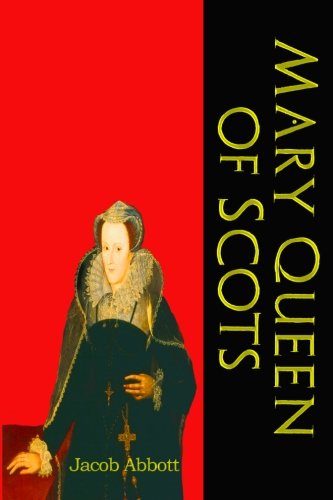-
Cyrus the Great: Often Called the King of All Kings
Jacob Abbott, Timeless Classic Books
(CreateSpace Independent Publishing Platform, Jan. 8, 2011)Cyrus the Great (c. 600 BC or 576 BC to December 530 BC), also known as Cyrus II or Cyrus of Persia, was the founder of the Persian Empire. It was under his own rule that the empire embraced all previous civilized states of the ancient Near East, expanded vastly and eventually conquered most of Southwest Asia and much of Central Asia, parts of Europe and Caucasus, from the Mediterranean sea and the Hellespont in the west to the Indus River in the east, to create the largest empire the world had yet seen. The reign of Cyrus lasted between 29 and 31 years. Cyrus built his empire by fighting and conquering first the Median Empire, then the Lydian Empire and the Neo-Babylonian Empire. Either before or after Babylon, he led an expedition into central Asia, which resulted in major campaigns that brought "into subjection every nation without exception." Cyrus did not venture into Egypt, as he himself died in battle, fighting the Massagetae along the Syr Darya in December 530 BC. He was succeeded by his son, Cambyses II, who managed to add to the empire by conquering Egypt, Nubia, and Cyrenaica during his short rule.
-
One of Ours: Willa Cather's Pulitzer Prize Winner
Willa Cather, Timeless Classic Books
Paperback (CreateSpace Independent Publishing Platform, Nov. 25, 2010)One of Ours tells the story of a Nebraska farm boy who struggles to find meaning in his life. It is the story of a young man born after the American frontier has vanished, yet whose quintessentially American restlessness seeks redemption on a frontier far bloodier and more distant than that which his forefathers had already tamed. Before the war, Claude comes close to finding value in the world when his parents allow him to attend the University of Nebraska. Living in Lincoln he befriends the Ehrlich family, who expose him to a life of art, ideas, and culture. Later, when forced to return to his father's farm, Claude seeks to find meaning in the form of human companionship. His attempt to find individual affirmation in the form of marriage fails, however, and the loneliness Claude encounters from his unaffectionate wife Enid compels him to volunteer in the overseas conflict. Claude's violent death on the battlefield - portrayed as sacrificial and glorious by Cather in the mind of Claude's mother - appealed to millions of Americans and probably played a role in the decision to award Cather the Pulitzer Prize for One of Ours a year after it was published in 1922.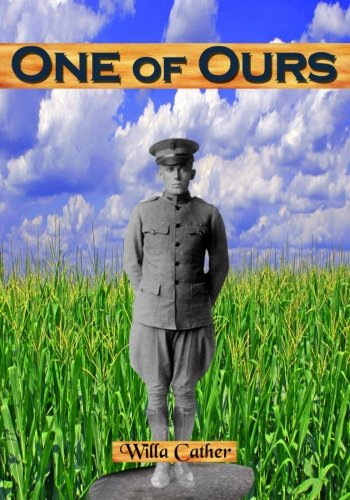
-
HOLY BIBLE: THE KING JAMES VERSION
CLASSIC BOOKS
Paperback (Independently published, March 25, 2019)HOLY BIBLE THE KING JAMES VERSION 1611 WITH BEAUTIFUL CLASSIC COVER, PERFECT FOR A GIFT. GET YOURS TODAY Specifications: Cover Finish: GLOSSY Dimensions: 5,25" x 8" (13.03 x 20,03 cm)Interior: White Paper Pages: 725
-
Old Christmas: Washington Irving's Tale of An Old-Fashioned Christmas
Washington Irving, Timeless Classic Books
Paperback (CreateSpace Independent Publishing Platform, Sept. 15, 2010)Old Christmas is a tale of the quaint and old English traditions of celebrating Christmas. Irving travels to the English countryside and meets an old schoolmate, who invites him home to spend Christmas at the family estate.
-
Romulus: Makers of History
Jacob Abbott, Timeless Classic Books
Paperback (CreateSpace Independent Publishing Platform, Jan. 8, 2011)Romulus and Remus were the twin sons of Rhea Silvia and Mars. They were, together with their mother, cast into the Tiber. The god Tiberinus saved Rhea Silvia from drowning, and the brothers were miraculously rescued by a she-wolf. The wolf reared the twins together with her cubs underneath a fig tree (the 'ruminalus ficus'). After a few years they were found by the shepherd Faustulus, who took the brothers home and gave them to his wife Acca Larentia to raise. When they reached maturity they killed Amelius, the brother of their grandfather, and built a settlement on the Palatine Hill. During a quarrel where Remus mocked the height of the walls, Romulus slew Remus and became the sole ruler of the new Rome, which he had named after himself. He took Hersilia as his wife. To enlarge his empire, he allowed exiles and refugees, homicides and runaway slaves to populate the area. The shortage of women he solved by stealing Sabine women whom he invited to a festival. After a few wars, the Sabines agreed to accept Romulus as their king. Upon his death he was taken to the heavens by his father Mars. He is later revered as the god Quirinus.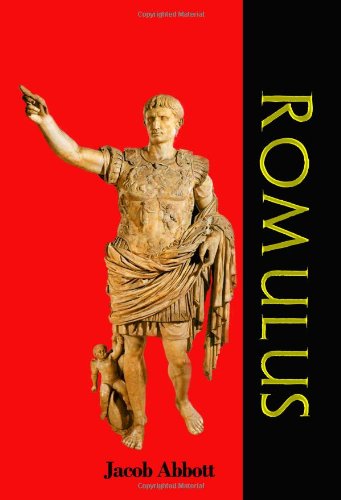
-
Hernando Cortez:
John Abbott, Timeless Classic Books
Paperback (CreateSpace Independent Publishing Platform, Jan. 8, 2011)Hernán Cortés de Monroy y Pizarro, 1st Marquis of the Valley of Oaxaca (1485 – December 2, 1547) was a Spanish conquistador who led an expedition that caused the fall of the Aztec Empire and brought large portions of mainland Mexico under the rule of the King of Castile in the early 16th century. Cortés was part of the generation of Spanish colonizers that began the first phase of the Spanish colonization of the Americas. Born in Medellín, Spain, to a family of lesser nobility, Cortés chose to pursue a livelihood in the New World. He went to Hispaniola and later to Cuba. In 1519, he was elected captain of the third expedition to the mainland, an expedition which he partly funded. His enmity with the Governor of Cuba, Diego Velázquez de Cuéllar, resulted in the recall of the expedition at the last moment, an order which Cortés ignored. Arriving on the continent, Cortés executed a successful strategy of allying with some indigenous peoples against others. He also used a native woman, Doña Marina, as an interpreter; she would later bear Cortés a son. When the Governor of Cuba sent emissaries to arrest Cortés, he fought them and won, using the extra troops as reinforcements. Cortés wrote letters directly to the king asking to be acknowledged for his successes instead of punished for mutiny. After he overthrew the Aztec Empire, Cortés was awarded the title of Marqués del Valle de Oaxaca, while the more prestigious title of Viceroy was given to a high-ranking nobleman, Antonio de Mendoza. Cortés returned to Spain in 1541 where he died peacefully but embittered six years later.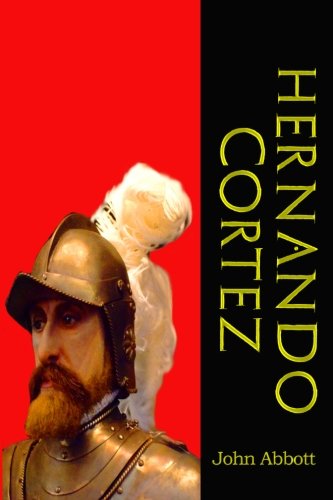
-
The Orchard of Tears: Sax Rohmer's Most Serious Novel
Sax Rohmer, Timeless Classic Books
Paperback (CreateSpace Independent Publishing Platform, Sept. 3, 2010)Many people who read The Orchard of Tears find it an "odd" book in the context of Sax Rohmer's other work. There are no oriental villains or exotic locations; rather, there are gentle rabbits and lambs in pastoral settings and a great deal of philosophical musing. As much as he enjoyed Fu Manchu -- and the notoriety and income the character provided -- Rohmer had other interests and a markedly serious side. The departure from his expected subject matter is plainly signalled by the book's dedication: To the slaves of the pomegranate, sons of Adam and daughters of Eve, who drink at the fountain of life, this chalice is offered as a loving-cup. The Orchard of Tears is Rohmer's most restrained and serious novel. It was written because the author wanted to write it, and his recent success afforded him the opportunity to do so. A clue to the intent is to be found when the protagonist, Paul Mario, asks: "You mean that literature and art persistently look in the gutter for subjects when they would be more worthily employed in questioning the stars?"
-
Through Russian Snows: A Story of Napoleon's Retreat From Moscow
G.A. Henty, Timeless Classic Books
Paperback (CreateSpace Independent Publishing Platform, Oct. 8, 2010)There are few campaigns that, either in point of the immense scale upon which it was undertaken, the completeness of its failure, or the enormous loss of life entailed, appeal to the imagination in so great a degree as that of Napoleon against Russia. Fortunately, we have in the narratives of Sir Robert Wilson, British commissioner with the Russian army, and of Count Segur, who was upon Napoleon's staff, minute descriptions of the events as seen by eye-witnesses, and besides these the campaign has been treated fully by various military writers. I have as usual avoided going into details of horrors and of acts of cruelty and ferocity on both sides, surpassing anything in modern warfare, and have given a mere outline of the operations, with a full account of the stern fight at Smolensk and the terrible struggle at Borodino.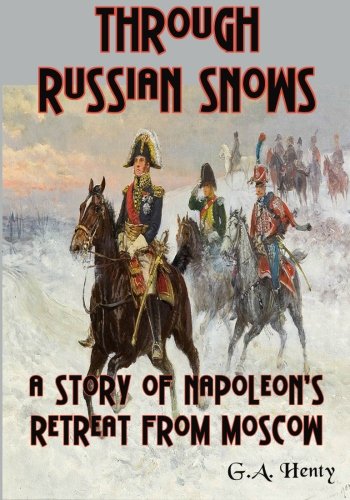
-
The Arabian Nights
Andrew Lang, Timeless Classic Books
Paperback (CreateSpace Independent Publishing Platform, Oct. 29, 2010)"The Arabian Nights," some of which, but not nearly all, are given in this volume, are only fairy tales of the East. The people of Asia, Arabia, and Persia told them in their own way, not for children, but for grown-up people. There were no novels then, nor any printed books, of course; but there were people whose profession it was to amuse men and women by telling tales. They dressed the fairy stories up, and made the characters good Mahommedans, living in Bagdad or India. The events were often supposed to happen in the reign of the great Caliph, or ruler of the Faithful, Haroun al Raschid, who lived in Bagdad in 786-808 A.D. The vizir who accompanies the Caliph was also a real person of the great family of the Barmecides. He was put to death by the Caliph in a very cruel way, nobody ever knew why. The stories must have been told in their present shape a good long while after the Caliph died, when nobody knew very exactly what had really happened. At last some storyteller thought of writing down the tales, and fixing them into a kind of framework, as if they had all been narrated to a cruel Sultan by his wife. This is the illustrated version with many large intricate pictures (b&w) to enhance the stories.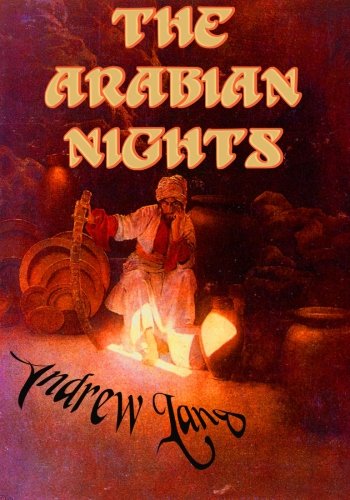
-
True Stories of Crime From the District Attorney's Office: Intriguing True Cases from the Turn of the 20th Century
Arthur Train, Timeless Classic Books
Paperback (CreateSpace Independent Publishing Platform, Dec. 15, 2010)Preface The narratives composing this book are literally true stories of crime. In a majority of the cases the author conducted the prosecutions himself, and therefore may claim to have a personal knowledge of that whereof he speaks. While no confidence has been abused, no essential facts have been omitted, distorted, or colored, and the accounts themselves, being all matters of public record, may be easily verified. The scenes recorded here are not literature but history, and the characters who figure in them are not puppets of the imagination, but men and women who lived and schemed, laughed, sinned and suffered, and paid the price when the time came, most of them, without flinching. A few of those who read these pages may profit perhaps by their example; others may gain somewhat in their knowledge of life and human nature; but all will agree that there are books in the running brooks, even if the streams be turbid, and sermons in stones, though these be the hearts of men. If in some instances the narratives savor in treatment more of fiction than of fact, the writer must plead guilty to having fallen under the spell of the romance of his subject, and he proffers the excuse that, whereas such tales have lost nothing in accuracy, they may have gained in the truth of their final impression. ARTHUR TRAIN CRIMINAL COURTS BUILDING, NEW YORK CITY, April 20, 1908. This books contains many intriguing cases such as "The Woman in the Case", "The Lost Stradivarius", "Five Hundred Million Dollars" and many others.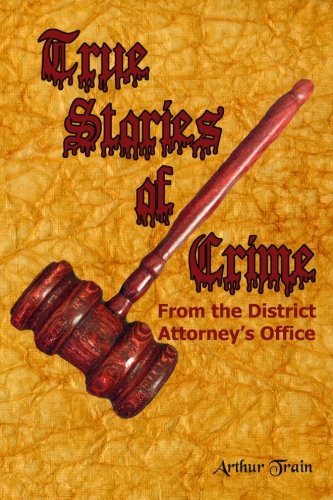
-
The Future of the American Negro: Booker T. Washington's Views on Blacks and Whites
Booker T. Washington, Timeless Classic Books
Paperback (CreateSpace Independent Publishing Platform, Dec. 15, 2010)Booker Taliaferro Washington (April 5, 1856 - November 14, 1915) was an American educator, author, orator and political leader. He was the dominant figure in the African American community in the United States from 1890 to 1915. He was representative of the last generation of black leaders born in slavery and spoke on behalf of blacks living in the South. Washington was born into slavery to a white father and a slave mother in a rural area in southwestern Virginia. After emancipation, he worked in West Virginia in a variety of manual labor jobs before making his way to Hampton Roads seeking an education. Booker T. Washington's "The Future of the American Negro" (1899) brings together in a single volume a number of his public addresses after the Atlanta Exposition address and articles in The Independent, Atlantic Monthly, Appleton's Popular Science Monthly, and other periodicals. This was the closest Washington ever came to an inclusive and systematic statement of his social philosophy and racial strategy. Washington stressed by repetition the economic means to black advancement and the philosophy of self-help, mutual aid, and education. He pronounced Reconstruction a failure because of its political approach, its wrong kind of education for blacks, and its encouragement to the freedmen to begin at the top instead of at the bottom. He stressed the mutual interdependence of whites and blacks in their common southern homeland. While he urged blacks to make themselves useful to whites as a means of gaining the full civil and political rights currently denied them, in occasional bursts of frankness, he admonished those whites who practiced discrimination, exploitation and violent repression against blacks.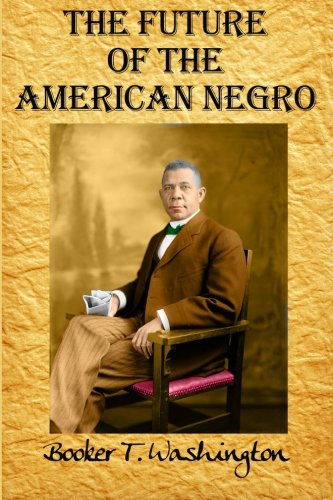
-
Mary Queen of Scots: A True Story that Reads Like a Novel
Jacob Abbott, Timeless Classic Books
Paperback (CreateSpace Independent Publishing Platform, Jan. 8, 2011)Mary, Queen of Scots (born as Mary Stewart and known in French as Marie Stuart; 8 December 1542 – 8 February 1587) was Scottish queen regnant from 14 December 1542 to 24 July 1567. In lists of Scottish monarchs, she is recognized as Mary I. She was the only surviving legitimate child of King James V of Scotland. She was 6 days old when her father died and she was crowned nine months later. In 1558, she married Francis, Dauphin of France, who ascended the French throne as Francis II in 1559. Mary was not Queen of France for long; she was widowed on 5 December 1560. Mary then returned to Scotland, arriving in Leith on 19 August 1561. Four years later, she married her first cousin, Henry Stuart, Lord Darnley. Their union was unhappy and in February 1567, there was a huge explosion at their house, and Darnley was found dead, apparently strangled, in the garden. She soon married James Hepburn, 4th Earl of Bothwell, who was generally believed to be Darnley's murderer. Following an uprising against the couple, Mary was imprisoned in Loch Leven Castle on 15 June and forced to abdicate in favor of her one-year-old son, James VI. After an unsuccessful attempt to regain the throne, Mary fled to England seeking the protection of her first cousin once removed, Queen Elizabeth I of England, whose kingdom she hoped to inherit. Mary had previously claimed Elizabeth's throne as her own and was considered the legitimate sovereign of England by many English Catholics, including participants in the Rising of the North. Perceiving her as a threat, Elizabeth had her arrested. After 19 years in custody in a number of castles and manor houses in England, she was tried and executed for treason for her alleged involvement in three plots to assassinate Elizabeth, and probably also because she was a Catholic.